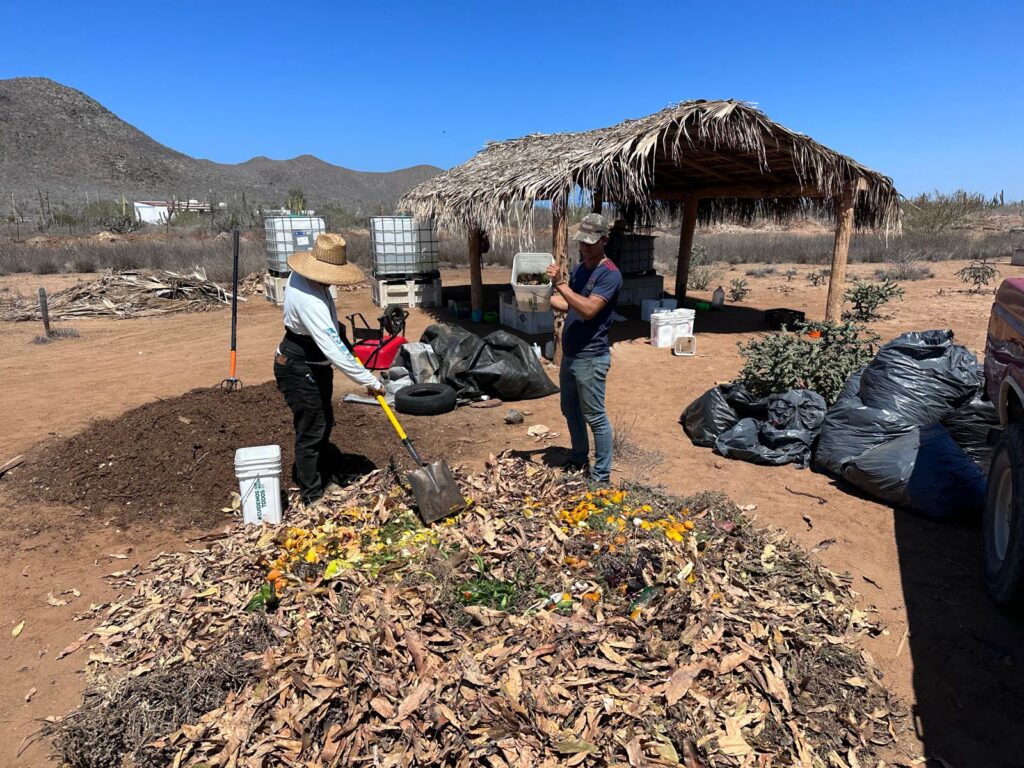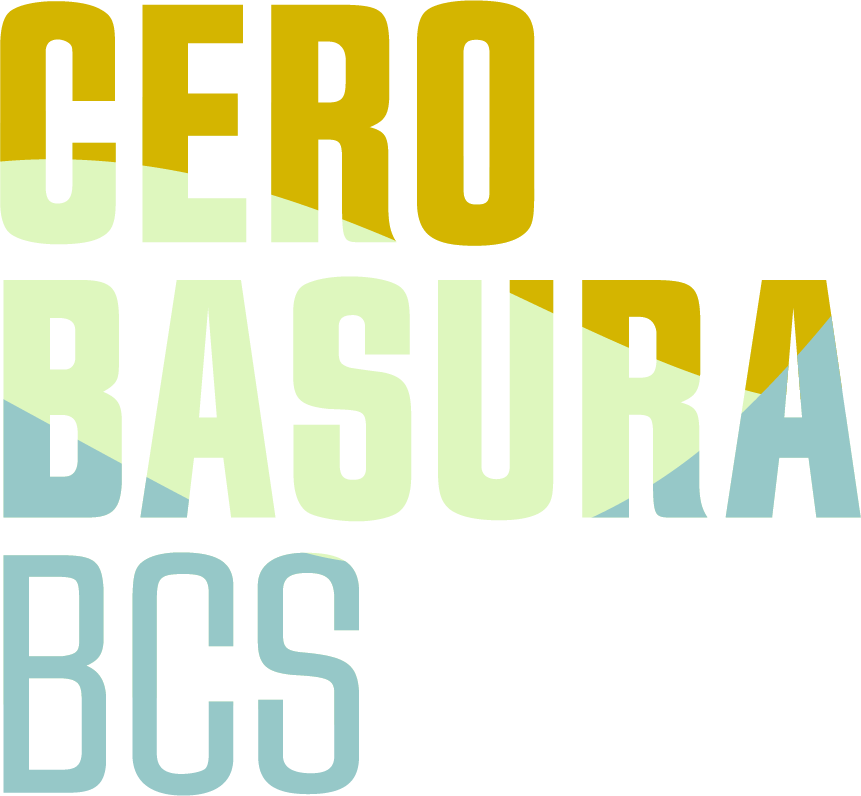“It’s a great day for our organic waste farm” glows Jaresy Plata, ACB’s head of organic waste. “All four of the different composting techniques are now running and we are focused on standardizing the process and increasing our intake capacity. We still have a number of challenges, but we are truly on the way to achieving our goal of diverting at least 30% of the community’s organic waste from the landfill and into soil and soil products.”
ACB is running the farm in partnership with INIFAP, the National Institute of Forestry, Agriculture and Livestock Research. INIFAP scientists are working with Jaresy and her team to determine which techniques are the most effective for composting and soil repair in our area, and they will generate the protocols and information necessary to expand this project to other communities in Baja California Sur.

The 4 composting techniques:
Hügelkultur. Hügelkultur is a centuries-old way of building a garden bed by layering plant debris and other ingredients in shallow pits where it eventually becomes nutrient-rich compost. “Hügelkultur is great for Baja because we produce such a large amount of plant waste like palm fronds, cactus and invasive grasses that are very difficult to compost using the other methods” explains Jaresy. There are now 3 Hügelkultur trenches on the farm that can be continually filled as the weight of the waste compresses itself. We will eventually be planted on top of the 3 trenches as well.
SIRDO. “SIRDO composting is great because the bacteria at the heart of this system can eat everything including meat, bones, dairy products, bread – you name it” says Jaresy. “The challenge for us is that it is super labor intensive. For the bacteria to be able to do their job, we need to cut all the organics into small pieces. We currently process about 40 kg per week, and are working on some interesting and innovative ways to deal with this step of the process.” You can learn more about SIRDO here.
Vermiculture/Worm Compost. “The worms are great because you can give them any old disgusting, decomposing fruit or veggie and they just eat it right up and turn it into compost.” explains Jaresy. But they do present their own set of challenges. “The worms will eat nasty stuff, but only if that stuff is uncooked fruits and vegetables” continues Jaresy. “Everything else is off the menu so we have to be extremely careful to ensure that the organic matter they get is properly separated. They are also quite sensitive to temperature so summertime in Baja is a particularly challenging. We built a shade for the worms before we built a shade for the humans at the farm!” In addition to compost and more worms, one of the big payoffs of vermiculture is the lixiviate, the liquid that drains from the composting process. It is rich in nutrients that can help repair soil and promote plant growth.
Windrow. “Windrow composting, in which the compost is amassed in long piles called windrows, is a great composting technique because it is so scalable and efficient” notes Jaresy. “But at the moment it is also our most challenging compost technique at the farm, not only because we are experimenting with using kitchen waste in the process (many composters do not) but also with keeping all complex organics like meat, bones, fish, and dairy products out of the system. This requires extremely well separated organic waste. We expect that our Windrow process will evolve and scale over time as we improve the process.”
Jaresy concludes, “We are so excited to be operational and will be intensely reviewing and improving the intake and composting processes over the summer, allowing us to hit the next milestone – scaling the system!”
If you would like to support Alianza Cero Basura’s Community-Led Organic Waste Farm, please check out the organic waste section of our how-you-can-help donation guide here. Together we can create the first zero waste tourism destination in Mexico!
Cover photo: Jaresy feeding the worms with fruits and vegetables supplied by the Organic Waste Collective




